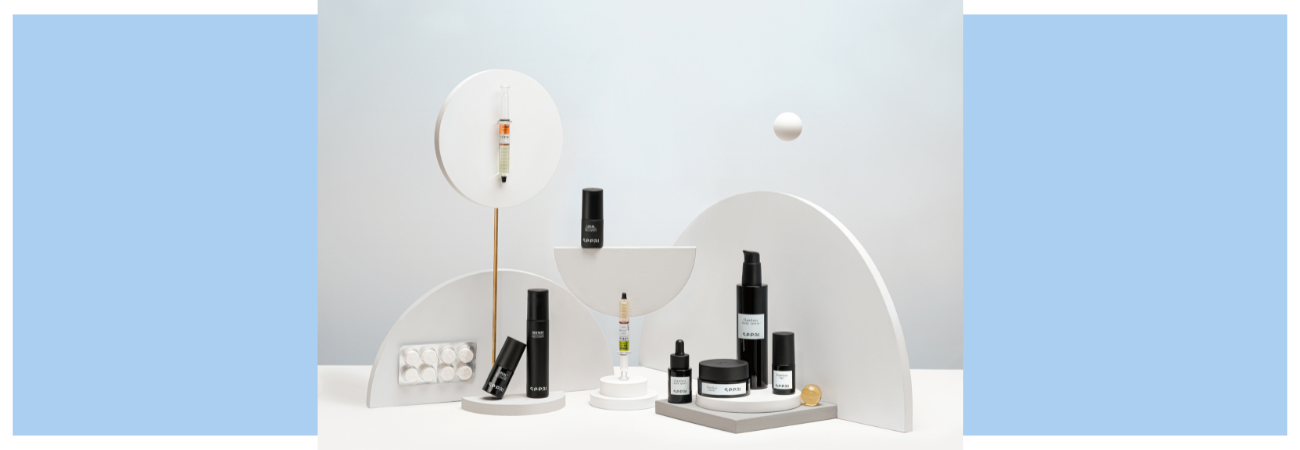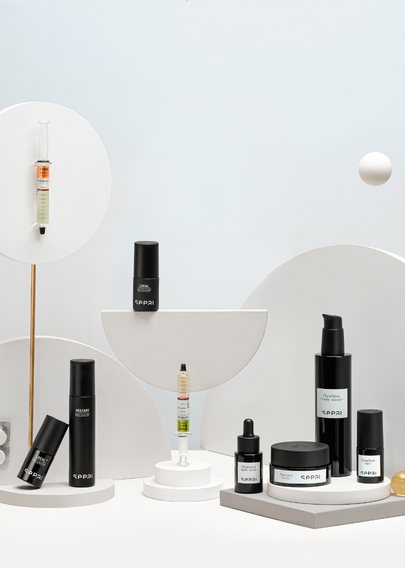A driving force in laboratory-based products, Sepai’s brand DNA is inherently about transparency – coupled with sustainable sourcing, zero-waste production methods and a strong sense of social responsibility. Their bespoke and delicate approach to beauty is completely unique. We caught up with Garazi Ortiz and Andrea Palacio from Sepai’s Quality and Sustainability team to talk supply chains and sustainable skincare.
. . .
Your approach to the supply chain is a cornerstone of your sustainability strategy. Could you walk us through how you choose your suppliers and any recommendations you have for other businesses looking to do the same?
A product starts from the raw materials and the manufacturing, so for ensuring that our product is sustainable we have to take a look at both of them. It is very important to check the quality of the materials that we are using, of course, but also the story behind the ingredients and how they were obtained. We care about the natural source from which our materials come and we try to be as respectful as possible of the environment in which they are located. In addition, our products are formulated without impurities following the grey list established by the company and using a wide variety of natural ingredients. In this way, we obtain high quality products whilst being more sustainable and dealing with local companies. On the other hand, Sepai is committed to gender equality, inclusion and a living wage and these are essential when choosing a supplier. And I think that it is very important for companies to be socially conscious and make it easier for the employees to work in a pleasant and comfortable environment. These factors together make our suppliers suitable for our projects.
Any raw material you use is ISO 16128 certified. What does this mean and have you found it has restricted your product design process at all?
We always request for an ISO 16128 statement before we introduce a raw material in our products, this has been challenging as there are lots of synthetic materials that fulfil the exact functions and needs we have when formulating. However, we prize the naturalness of the product because that is what makes our products more special.
You have strived to localise your process to Spain as much as possible. What did you learn doing this and were there any unexpected challenges? What have been the benefits?
SEPAI is located in a privileged area surrounded by companies that belong to the sector. This fact has helped us a lot to be able to focus the entire process chain. By far, the greatest benefit is the close contact that exists between all the companies involved in the process, by having a close relationship, we feel that our products are manufactured with better care and respect. This relationship makes a strong network that has helped us in all the challenges that we have faced. There are more benefits than disadvantages, however, if I had to say one, it would be that by focusing so much on the local market, sometimes, when we have a very specific need, finding a solution is more complicated, although we have always found a way.
Your use of biotechnology and cold press production is key to your skincare range. How have these processes made your products more sustainable?
We firmly believe that the use of biotechnology is essential for the cosmetic industry. Thanks to this we can obtain both high-quality and functional raw materials in a greener way. Processes such as plant cell culture, biofermentation and supercritical extraction give us extracts with a drastically reduced water consumption, without the use of pesticides and a negligible soil occupancy. Moreover, this eco-designed extraction method gives us access to rare, endangered, and slow-growing plants without endangering biodiversity. Finally, as we wanted products that were as sustainable as possible – and to close the loop – we bet on a cold process in the manufacture of our products, saving energy and water and consequently, reducing our carbon print.
What do you think are the biggest roadblocks for the skincare industry becoming more sustainable?
The main problem that we can find in a cosmetic is that for its preservation it is important to use an appropriate packaging. Plastic is inert so it keeps formulas safe, and it also makes the product attractive to the public as it is easy to handle. It is a cheap material widely used because of its versatility. However, it has a short life, and its recyclability is not permitted in all industries. It is used in cosmetics, fashion, food and other industries but today it is an unresolved problem on which much of the research and development for more sustainable consumption is being focused.
Learn more about Butterfly Mark certified Sepai here
< Back



